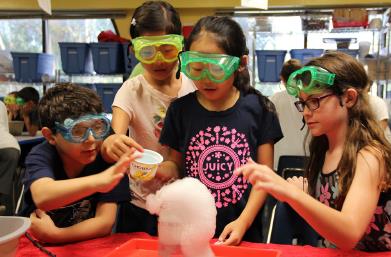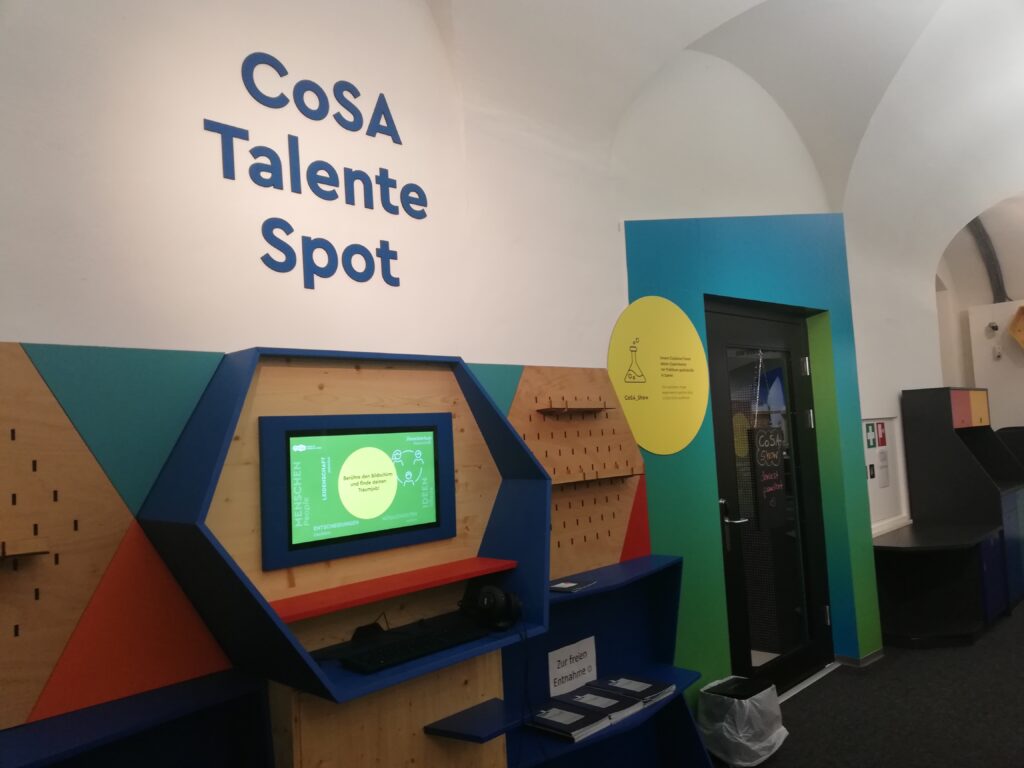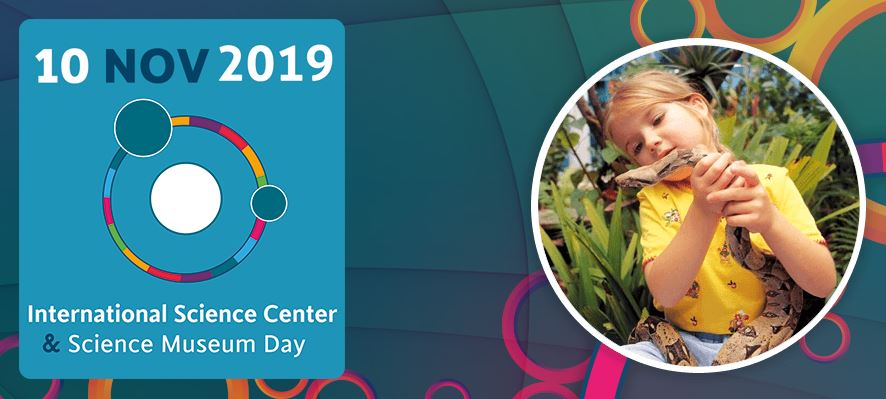After explaining the basics of exhibition design, I’ll go through a little of history with science centers and define a few of their characteristics. In the next article, I will present a world reknowned science center, the Exploratorium.
Science, society and science centers
Nowadays, the relation between individuals and science is quite complexe and paradoxal. In the 90’s scientists and engineers had some image problem, public having in mind the image of the mad scientist. George Gerbner studied the perception of scintists among 1500 television watchers and it appears that the more likely the person watches TV, the more likely she is to think scientist are odd and peculiar. A lot of progresses have been made through the years, but the COVID-19 pandemic reminds us of some shadows around the scientific world. Every year, studies are made showing indicators of public attitudes towards science and technology. Here are a few of them released by the Pew Research Center about 2020 Worldwide opinion on science and technology. As you can see underneath, the majority of people in 2020 say they have some trust in scientists to do what is right, but in the same way they feel that they doesn’t know enough about science to really understand the topics around it. The image of scientists depend a lot of the level of education of population, and the way media depict and explain science can really get the population confused.


As you can see, talking about science implies a broad range of implication : not only the knowledge but legal, ethical, environmental, economic, political and sometimes religious issues. The populations usually are not well informed about science and technology, which create both a challenge and an opportunity for science centers.
Science centers
Science centers are educational facilities using methods to teach science and technology. Those methods include the use of interactive displays, events and activities, web-based education programs and remote teaching and learning techniques [2]. The range of exhibits may be oriented towards natural history, earth sciences, pure science, science and technology or industry. Aerospace, underwater exploration, nanotechnology, digitization, artificial intelligence and genetics are just a few of the subjects that may be encountered. Exhibitions based on pure science focus more specifically on demonstrating phenomena, the scientific method and the process of experimentation. The focus is on discovering learning with strong hands on emphasis.

The audience for the science center usually includes children of school age, teenargers and adults altough science discovery rooms for preschoolers may also be found in some science centers. But children are not the only people in our society who need to understand science. And by over emphasizing fun, we run the risk of literally losing the science in science centers. Interpreting science and technology for a broad and diverse audience is at the heart of the mission of most science centers, it should include both children and adults.
Science centers are community ressources that empower parents as advocates for their children’s learning. Through content-rich exhibitions and programs, parents and children can learn together. Science centers partners with schools and expand the learning resources for families. Through after school programs, vacation and summer classes, parents are able to expand the experience base for their children, this enhances the educational infrastructure for the entire community [3].

Sciences Centers evolved with interactivity
20 years ago, science centers virtually owned interactivity. Video games were in their infancy, most children’s museums were small, the children’s museum file had not experienced the dramatic growth of recent years and few other interactive options existed. The competitive universe of children based centers changed this. Children’s museums look very much like science centers. Natural History Museums, zoos and art museum now reach out to families and provides hands on experiences. Even themes parks which previously used passive dark rides incorporate hands-on exhibits because they have learned that hands on increases dwell time (the time spend by visitors in an exhibition). So hands on pays.
In the 1970 only 16 museums centers existed worldwide. Today, Science centers and science museums are present on all continents and welcome 300 million visitors [4]. Large science centers exist in smaller cities, and more are in the planning stages. The proliferation of science centers provides multiple opportunities for informal science education.
Nowadays, there is an explosion of interaction in all the entertainment sectors, and in medias. It’s a challenge for science center to keep showing entertaining and educational content. Indeed who wants to see something in a science center that you can see on the TV or somewhere else ? The approach used by science centers against this is to integrate what can be seen as meaningful interactive experiences with authentic objects and concepts that can’t be replicated out of the space of the science center because every object used is unique. In this way, space and material is way more important than in every other exhibition [3].
The challenge of children education
Although aimed generally at children from preschool age through to about age 12, experience has demonstrated the value of having separate areas designed to serve the developmental requirement of toddlers (aged 18 monthts to 3 years), preschool and kindergarten children (aged 4-6) and primary and middle school children (aged 6-8 and 9-12). In addition, children’s spaces must accomodate accompanying adults and family groups including parents, grandparents, and both younger and older children.
The range of exhibits that may be conceived for a children’s exhibition space is very wide, but in virtually every instance there will be an interactive element. Interactivity in the children’s gallery can be :
- Low tech : relying on such activities as storytelling, role playing ,dress-up ; directed seeing, and puzzle solving ; facility demands might include low dividing walls surrounding a play area or special floor surfaces, but these are generally manageable within most building types

- Medium tech : which might involve working with clay, printmaking, such activites may demand water supply and drainage, food storage, animal care, and clean up facilities

- High tech : using technology such as scientific apparatus or multimedia that may be as demanding of smart exhibition space as any sophisticated black box exhibition

Intercreative exhibition spaces
More and more museums of all types are creating spaces and exhibits that offer different generations and market segments opportunities to interact creatively through diverse means such as performance problem solving hands on experience, experiment, creative writing, filmmaking, and many other activities. We may call the intercreative exhibition spaces.
Intercreative centers require specialized types of supports, storage and workshop space. They may feature living collections, moving water or wind tunnels, or industrial, transportation, medical, or military technology. Part of the ethos of these exhibitions is that visitors are invited not only to look at exhibits, but to learn by doing, so facilities must be designed for visitor participation, either right in the exhibition spaces or in immediately adjacent areas [3].

Planning and design of intercreative spaces may require the participation of specialists in the art, science or performance activity intended, or in the design of art studios, laboratories, workshops, rehearsal or performance venues, multimedia production facilities, TV or recording studios, or other specialized environments.
Most science centers resquires flexibiliy in their galleries so that the space can be completely reconfigured for each exhibition. Intercreative exhibition spaces require smart technologyu capability and flexbility of the location, setup ; and replacement of stand alone exhibit modules which are likely to change anywhere from every 2 months to every 3 to 5 years. For intercreative spaces incorporated within an exhibition space, the following requirements may apply and be specified in the design requirement for individual exhibits :
- Access to power and data grids extended accross floors, majors walls, and ceilings
- Level changes or the ability to build in structures provinding new levels and enclosures
- Ability to create equipment pits in selected areas
- Capacity for at least one school class (30 children) at one time
- Storage for supplies and props, housekeeping and installation equipment nearby
- Good service access via loading docks freight elevators, or hydraulic ligts
- Public access for all age groups
- Water supply and drainage
- Air compressors
- Sturdy washable surfaces
- Specialized sound and light systems
- Suspension capability for exhibit elements including electronics
- Special acoustic treatments [3]

An overview of Science Centers and institutions around the world
As we previously said before science center are getting more and more present worldwide. A few institutions are trying to promote their visibility such as the international science center. It is a yearly global event illustrating the impact and reach of all the world’s science centers and science museums. The last event was last year, because of COVID.

An other institution is the Association of science and technology centers, you can see their goals underneath.

If you want to get an overview of the different Science Centers around the world you can go visit those links :
https://www.cs.cmu.edu/~mwm/sci.html
https://www.astc.org/find-a-science-center/
Sources :
[1] https://www.pewresearch.org/science/2020/09/29/science-and-scientists-held-in-high-esteem-across-global-publics/
[2] https://www.ctsc.org.za/about/what-is-a-science-centre/
[3] http://www.scielo.br/scielo.php?script=sci_arttext&pid=S0104-59702005000400013
[4] http://www.iscsmd.org/about/
[5] https://www.spymuseum.org/education-programs/educators/interactive-virtual-field-trip/
[6] https://www.fleetscience.org/events/science-clubs
[7] https://kalstein.eu/a154/Palais-de-decouverte-presente-des-salles-de-chimie/article_info.html
[8] http://www.iscsmd.org/about/
[9] https://www.astc.org/about/strategy/